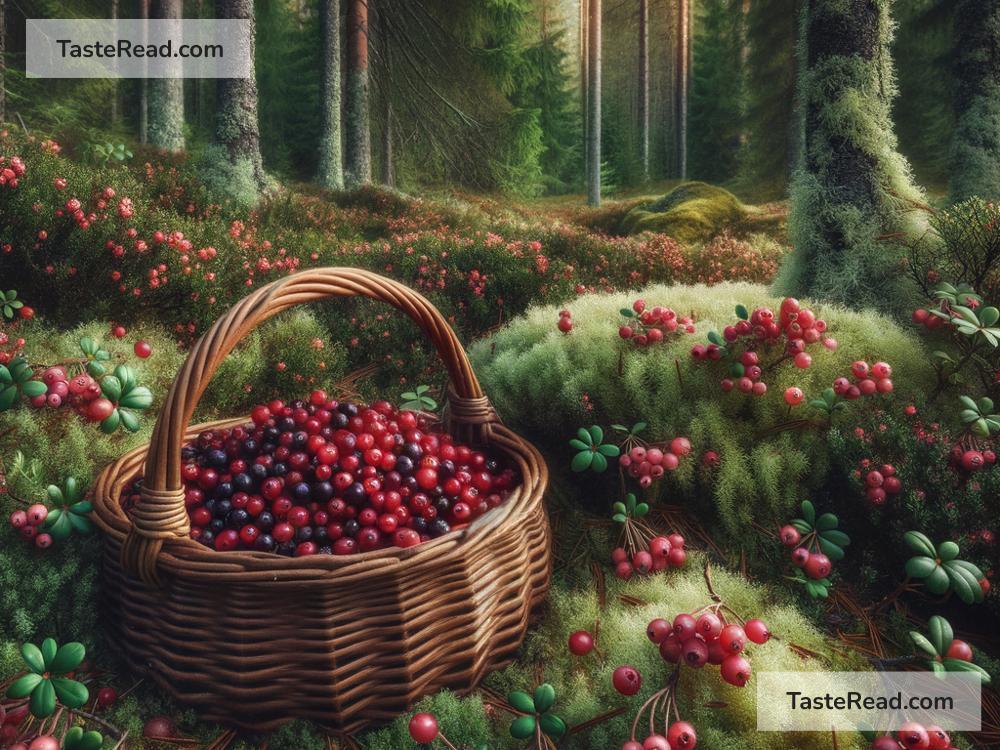Discovering Scandinavian Lore: The Magic of Lingonberries and Wild Foraging
Scandinavia, a region made up of Sweden, Norway, Denmark, and sometimes Finland and Iceland, has a deep connection to nature. One fascinating part of this connection is the tradition of wild foraging, especially for lingonberries. Small, red, and bursting with flavor, lingonberries hold a special place in Scandinavian culture, not only as a food source but also as part of their folklore and beliefs.
Let’s dive into the cultural lore surrounding lingonberries and the cherished practice of wild foraging.
Lingonberries: The Tiny Gems of Scandinavian Nature
Lingonberries, known as lingon in Swedish, are small, tart, and bright red berries that grow abundantly in the Scandinavian countryside. They thrive in forests, especially in areas with pine trees, and can be found carpeting the forest floors. They’re often compared to cranberries due to their tangy flavor, but lingonberries are smaller and have their own distinct taste.
For centuries, lingonberries have been a staple in Scandinavian kitchens. They’re not just a tasty treat but can also be preserved easily thanks to their natural acidity. People make lingonberry jams, syrups, and sauces, which are commonly paired with savory dishes like meatballs or served with pancakes. Lingonberries were a vital source of vitamins during long, cold winters when fresh fruits were hard to find.
But lingonberries are more than just berries—they’re tied to the cultural identity of the North. You’ll find them in stories and traditions passed down through generations.
Lingonberries in Folklore
In Scandinavian folklore, lingonberries are considered a gift from the forest—something pure, wild, and sacred. People believed that they had magical properties and could protect against evil spirits or bad luck. Folklore often describes the forest as a place of mystery, filled with both helpful and mischievous beings. Lingonberries, as part of the forest’s bounty, were seen as protective, symbolizing the good that nature provides.
One common belief was that lingonberries held healing powers. Some Scandinavian folk stories tell of people curing illnesses or wounds using lingonberries, either by eating them or applying them directly. While modern science backs up some of these ideas (lingonberries are packed with antioxidants and vitamins), the belief in their magical healing abilities gave them an even deeper significance in the past.
The berries were also thought to be connected to love and family. Traditionally, people would pick lingonberries together as a family or community activity, strengthening their bonds while working in harmony with nature. This idea persists today, as many Scandinavian families still enjoy berry-picking trips during the summer and early autumn.
Wild Foraging: A Way of Life
Wild foraging is a common activity in Scandinavia. It’s not just about finding food—it’s about connecting with the land and experiencing its beauty. Lingonberries, mushrooms, cloudberries, and other wild treasures can be gathered in the forests and meadows.
The tradition of wild foraging is supported by a unique Scandinavian law called Allemansrätten, or the “Right of Public Access.” This law allows everyone to roam freely in nature, including forests and some private lands, as long as they don’t disturb the land or harm the environment. This means anyone can forage berries and mushrooms and enjoy the bounty of nature without needing permission from landowners.
For Scandinavians, wild foraging is more than a practical activity—it’s a way to slow down and escape the hustle of modern life. Spending hours wandering through the forest, breathing the fresh air, and listening to birdsong creates a sense of peace and well-being. It’s also a chance to treasure the simple joys of life, like finding handfuls of ripe berries hidden among the leaves.
Lingonberries and Modern Scandinavian Life
Even though supermarkets are filled with imported fruits and vegetables today, lingonberries remain important in modern Scandinavian culture. They’re still collected and eaten the traditional way, often as part of recipes passed down from older generations. Lingonberry jam, for example, is as culturally significant as the dishes it accompanies.
Lingonberries also symbolize sustainability and simplicity. In a world where processed foods dominate, lingonberries remind people of the benefits of eating local and seasonal food. Foraging for lingonberries doesn’t require big machines, chemicals, or packaging—it’s nature at its finest.
Many Scandinavians still teach their children about lingonberries and the joys of wild foraging. By passing down these traditions, they ensure future generations remain connected to the land and its wonders.
The Beauty of Lingonberries
Lingonberries aren’t just berries—they’re tiny symbols of Scandinavian culture and nature. Their folklore tells stories of healing and protection, while their role in wild foraging connects people to the rhythms of the earth. Whether they’re eaten fresh from the forest or turned into delicious jams and sauces, lingonberries hold both practical and symbolic importance.
Foraging for wild fruits like lingonberries reminds us of the value of simplicity and the beauty of the natural world. Next time you go for a walk in the woods or enjoy a dish with lingonberry jam, consider the centuries of tradition wrapped up in their tart, sweet taste. Scandinavian lore and lingonberries show us that the forest is not just a place—it’s a treasure trove of culture, magic, and connection.
Enjoy the magic of lingonberries, and maybe one day, you too can experience the joy of foraging in the wild!


